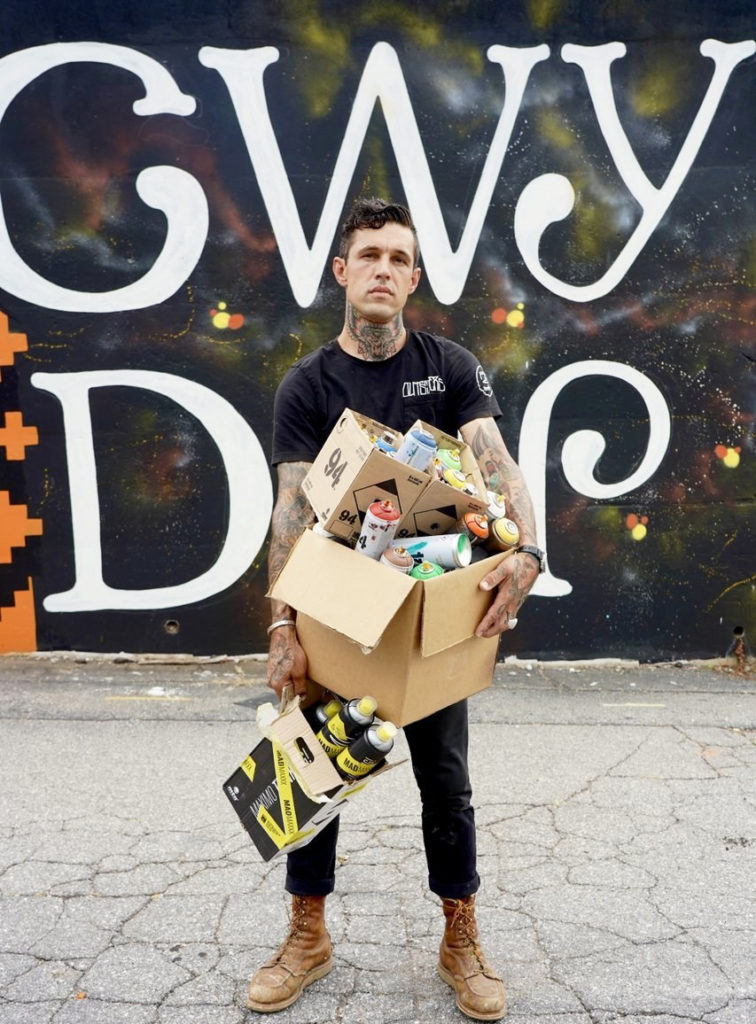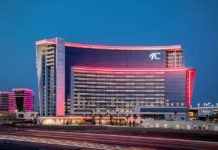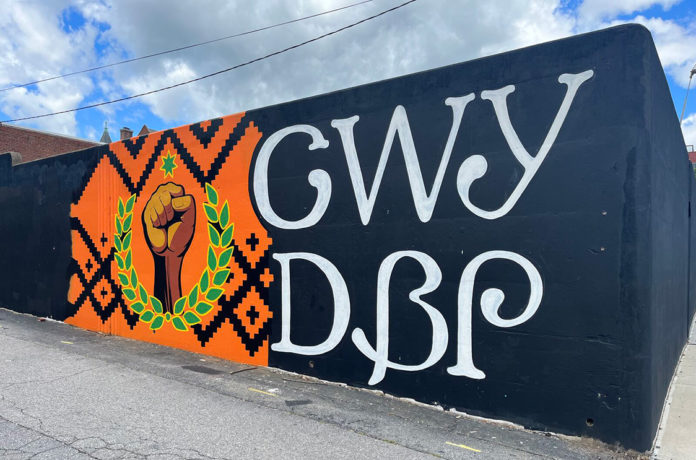ASHEVILLE, NC – Through a series of public works of art on 25,000 sq. ft. of donated walls across downtown Asheville, NC, the Indigenous Walls Project’s mission is to amplify Native and Indigenous voices from all Indigenous nations across America and continue to support and grow the Land Back movement. As part of the project’s unveiling, the very first Intertribal Graffiti & Mural Jam was held in Asheville Oct. 20–23, 2022.

The event included live mural paintings of Native culture throughout the city, graffiti installations, film and panel presentations, and an Indigenous market from intertribal makers featuring handmade baskets, beaded works, jewelry, paintings, and Native food. The weekend began with remarks by Mary “Missy” Crowe, a member of the Eastern Band of Cherokee Indians, prior to the film screening and artists panel at the Wortham Center for the Performing Arts in downtown Asheville, which centered on Indigenous environmentalism and restoration of the name Kuwohi to the mountain currently known as Clingmans Dome.
The Indigenous Walls Project is on a mission to expand people’s minds about the ancestral land where they’re currently standing. Jared Wheatley, a Cherokee Nation citizen, activist, and Asheville business owner, started this project as a way to get people to focus on the land with the ultimate goal of bringing back land to every tribal nation.
The street art installations created during the event feature works from 12 artists across 10 tribes, and there are more walls for additional tribes to participate. “If they want a voice, I’ll give them an opportunity to put it out there and amplify it in a public domain where we can encourage people to have the conversation,” said Wheatley. “That’s what I’m here for. That’s my message.”
Participating artists from Cherokee, Diné (Navajo), Yaqui, Purépecha, Lakota, Apache, Quechan, Arawak, Menomimee, and Ojibwe nations included:
| Name | Nation | City From |
| Rezmo | Diné (Navajo) | Phoenix, AZ |
| Yukue | Yaqui | Phoenix, AZ |
| IROT | Apache | Albuquerque, NM |
| Tekpatl | Purépecha | Portland, OR |
| Saba | Diné (Navajo) | El Paso, TX |
| Leon Rainbow | Quechan | Trenton, NJ |
| SEN-1 | Arawak | New York City, NY |
| El Niño Perdido | Menomimee | St. Paul, MN |
| Lucious | Ojibwe | St. Paul, MN |
| Breeze | Tohono O’odham | Phoenix, AZ |
| Vyal | Zuni | Los Angeles, CA |
Additionally, the Center for Craft in downtown Asheville has unveiled a new public art installation and accompanying parklet called ᏔᎷᏣ The Basket. This exhibit honors the ancient craft of Cherokee basket making traditionally made with rivercane. It also marks the location of a former trading route on the Cherokee’s ancestral land.
Asheville is the home of the Anigiduwagi, the original name for the Cherokee Tribe prior to the Indian Removal Act and resulting Trail of Tears. The Eastern Band of Cherokee Indians (EBCI) are descendants of those who refused to be relocated. They either hid in remote areas of the mountains or returned from Oklahoma years later.
During the 1800’s, tribal members purchased what is now known as the Qualla Boundary, a reservation located in Western North Carolina that is kept in trust by the federal government.














































